#Plant Folklore: The Devil’s Plants
Text
Plant Folklore: The Devil’s Plants from House Plant Hobbyist
* The folklore about why Onions and Garlic are associated with The Devil is interesting to me given that the consumption of Garlic, at least, was associated with Jewishness in the Middle Ages to such a point that the scent or presence of Garlic (either in one's home, or on one's person) was enough to convict one of being a Jew. Many of the positive associations listed following that are, ironically, many of the reasons Jews specifically used (or carried) Garlic for spiritual or magical reasons at that time. Jewitches has a lovely article outlining so much of this. In other words: ✨Historical Antisemitism Is Really Fun To Notice Once You Know About It!✨
#Plant Folklore: The Devil’s Plants#House Plant Hobbyist#Herbalism#Jewish Studies#Religion & Magic#Bookshelf#Tumblr Staff Has Ruined Links Now And I Hate Them For It
3 notes
·
View notes
Text
The Green Devil of the Ozarks: The little green fairy of... moonshine?
It was 2005. I was with my grandfather in an old shop similar to "dick's 5 and 10" outside of Branson, Missouri. This is where The Green Devil caught my eye.
My grandfather frequented little old fashioned stores like this. He loved collecting all kinds of gadgets. Old movie posters, salt water taffy, and soda parlor paraphenalia. It was heaven on earth to him in this little corner of the world that was stuck in an older Ozark time. His house wasn't too dissimilar to a crackerbarrel gift shop. All kinds of wooden toys and dolls. He loved his little knickknacks. But on that day he found it. A copy of an old French absynthe poster with "the little green fairy" smirking at the viewer. He had to have it. It was being sold for $8! frame included! If only the seller knew the true value of it. Or how it's mere existence was breaking so many copyright laws.

Maurin Quina, as it's named, is a French apéritif advertisement painted by Leonetto Cappiello in 1906. The drink was made illegal soon after its creation. But this poster is now being reused today. It was not well known in the US at all back then. Not even in the 2000's. but my grandfather being a moonshiner, absynthe fan, and art history drop out, knew all about it.
My grandfather was not as religious as the rest of my family. But he sure prayed to God when he was trying to avoid the law. He was selling homemade moonshine without any sort of license or proper knowledge of sanitary practices. It was an arte form he learned from his father that I never had the pleasure of learning.
He decided to hang this new poster up in his storm cellar where he kept his aging bottles of various liquors. Over time it developed A life of its own. My grandfather would kiss his hand and place it on the poster of the little green fairy after every jar was sealed or sales were made. I Don't think he saw this as devil worship so much as just a simple good luck ritual. Not too disimilar to his high school basketball team kissing the image of their mascot before a game. He always practiced these superstitions even though he didn't seem to really believe in them.
Fast forward to today. I'm an Ozark trad witch. So of course I now work with this image as if it is the devil himself. He is a devil that rules spring and summer. Drunkenness, poison, lunacy, fairies, and nature. He is associated with law breaking, alcohol, healing, harming, and fertility. With Easter coming up He is on my mind heavily. A time I feed him red dyed eggs symbolizing the blood of christ and the blood of good Christians. I feed him this with intentions of causing those which share the eucharist to lust. Poisoning the church so to speak. I attend mass in spirit form and dip my blessed turkey wish bone down in the communion wine. The turkey is symbolic of love in the Ozarks. And the wishbone is horned like the stang, and my devil. Midnight mass on Easter is filled with drunkenness and sex. Those consuming this spiritually poisoned wine are consumed with lust for others in the church. An orgy ensues in the great house of God. Only for all members to awaken Easter morning with no memory of the incestuous rituals performed with their brothers and sisters in christ. To do such things in the house of God and not confess them (due to not remembering) is damanble. This is my goal as a witch. To bring the witches Sabbath to the church and to pervert the souls of good men.
By turkey wand and lustful stang I complete my work in the devils name.
A call to the Green Devil:
"Envy is his name. Drunkeness and poisoning are his arte. He is Lord of the little people and plants alike; come little green fairy and bring your lust and your lunacy. Green devil rise from the roots below like a serpent. Green devil come down from the tree tops like a booger in the night who takes its flight. Join me in this witching hour oh beast of the green and hear my call to the wild. By my witches flame may it be so."
Look out for a post on the black and red devils later this year. Our horned one changes with the seasons
#folk witchcraft#traditional witchcraft#transgender witches#beginner witch#folk catholicism#ozark magic#animism#santa muerte#folkloric witchcraft#witchcraft#ozark witchcraft#ozark howler#green devil#man in black#green magic#plant magic#green path#crooked path#theistic satanism#the boogeyman#satanism#satan#hail satan#booger dog#witchfather
14 notes
·
View notes
Text
"Universal" Monsters: The Update
After the last post went over so well, I figured you all would like to see the 'results' of your input and further research.
The original idea was the focus on mythology, folklore, occult, and religious beings. Truthfully, I don't think categorically, anything can really be added to this list even if we include modern monsters. But feel free to mention things you think I missed or should be expanded upon into their own categories.
Humans Who Have Passed On - This is a broad category of undead beings. Notable Subtypes include:
Blessed/Damned - People who've gone to an afterlife and come back from that.
Ghosts - Your standard spirit of those who've passed on. A subtype of this is the Haunt, which is a location so full of death that it's not so much one ghost, but a gestalt entity of horror.
Revenants - Undead that are physical. This can be a zombie, a slasher, or any other physical being that's come back from death.
The Border of Life and Death - Women who die in childbirth and the children who die similarly tend to take on special significance in cultures and tend to come back as some of the most horrifying monsters in many cultures.
Spirits - Incorporeal beings that often embody a concept. Subtypes include:
Elemental Embodiments.
Spirits of Intellect - less in religion and more in occult circles, these are plied for information since they just 'know' things.
Larva - another occult concept, basically the magical equivalent of decomposers. They eat leftover magical and emotional effluvia.
Magical Assistants - Many magical traditions invoke different spirits to perform different tasks. Sometimes, it's gods, but lesser more direct spirits are also invoked.
Patrons - Spirits of Places, Buildings, Homes, or even crafts. Humans have a special relationship with the latter spirits, and they are often invoked to aid in tasks related to the home or work.
Fae/The People Who Are Not People - A common group of supernatural beings that are like people but have both powers and limits that make them more and less than people. Often tied to the natural world.
The High Fae/The Arch Fae - Sometimes conflated with the Nordics of UFO Lore (Yeah, UFO lore has racist connotations to it). These are the High Elves, the Court Faeries, and similar beings.
Communal Fae - These are the "Common" fae, shorter in stature and often seen in groups. The "Greys" of UFO lore. Also, the common short-statured Elves, Dwarves, Svartalves, Goblins, and possibly Huldrafolk).
House Fae - A specific variety of Fae similar to the Patron spirits, but more corporeal. Brownie, Domovoi, Knockers, Gremlines -- all beings tied to the home and hearth, but distinctly 'other'.
"The Little People" - Liliputian Humanoid beings, from "pixies" to Abatwas.
Merfolk - This one is pretty clear. They are like the above Fae varieites, but tied to the oceans.
The Unreal Being - A lot of fae creatures can be just... weird. Not full hybrids, but often hybrid as a base before weirder things are put down. Weird is the key for such beings to show that they are "Others".
Giants - They're like humans, but bigger and more 'primal'. But mostly, they are big.
Giant - This is the basic giant, a person who is bigger.
Ogre - Like a giant, but usually not as big, and less human in appearance. Trolls also fit in here via the popular conception (thou Troll is like the words Faerie and Yokai, as a general catch-all term for supernaturals not infernal or divine).
Wildman/Bigfoot - A big person, covered in hair.
Animal-Like - Animals! But Magical.
Animal Bride/Animal Shifter - An animal who turns into a person, or a person who turns into an animal. These include: Wolves, Bears, Boars, Cats, Hares, Owls, Crocodiles, Lions, Hyena, Jaguars, Leopards, Coyotes, Tigers, Seal/Sea Lion, Frog, Swan, Peahen, Cow/Bull/Ox/Cape Buffalo, Shark, Hedgehog, Fox, Dog, Jackal, River Dolphin, Dove, and Cranes. I'm sure there are more.
Ancient/Sacred Animal - Often greater in size or with magical powers, but still an animal. Probably can talk, but not always.
Yaogwai - An animal that has lived for so long and gained so much wisdom that it's become a magical being. Often taking human form. The age part is more important than the shifting part.
Chimeras - Mixtures of multiple animals or impossible combinations (like Mothman)
"The Foreigner" - Like Chimera but for people. These range from people with a face in their chest and no head to those with a giant foot they use for shade, to just normal-looking people with strange habits. A product of xenophobia.
Sea Monsters - Monsters of the ocean depths. Often hybridized with land animals or otherwise of 'abnormal' proportions.
Demons - Demons are negative spirits, beings that cause maladies, calamities, and other things. They are dangers, warnings, and cultrual tools to explain away problems or to guide culture.
Hag - Fears of aging and death manifest in these evil magical old women who do all sorts of evils to the world. Sometimes just referred to as "Witches" in those cultures, but more specifically when a full dehumanizing aspect is applied to them rather than just having them be malicious spellcasters. Yes, it is often found in cultures with rampant misogyny.
Fiends/Lesser Demons - Your "Generic" Demon/Malicious spirit.
Devils - Tempters and smooth talkers. Bargaining beings.
Disease Spirit - Spirits used to explain away various illnesses.
Boogiemen - Spirits used to warn children away from activities or locations that often have mundane dangers they won't take seriously.
Vampire - A variation of the Disease Spirit, specifically accounting sickness/pestilence with a being literally 'draining the life' from others. Often given a lot of powers, but also the word itself is bandied about to describe so many monsters that it loses a bit of its meaning.
The Beautiful Lure - Succubus/Incubus/Temptresses of the Road. It's something between a Devil and a Boogiemen, but because the archetype is so common, I placed it here.
Dragons - Big, Scaley, Dangerous. Sometimes exhales a dangerous substance.
Wyrm - Dragons without limbs
Horned Water Serpent - Dragons of North America, associated with the earth and poison/disease.
Lindworm - Dragons with two limbs (legs).
Wyvern - Dragons with four limbs (wings and legs).
Classical Dragon - Dragons with six limbs (wings, arms, and legs)
Naga - Shapeshifting Serpents of India and Indonesia
Amphiptere - Dragons with wings
Asiatic Dragon - Ryu, Lung, Rong, etc. Serpentine, magical, 4 limbs, fly via magic.
Feathered Serpent/Wadjet/Quetzalcoatl/Seraphim(?) - Sometimes winged, sometimes not winged.
Celestials - Spirits and beings associated with the skies/divine realms
Standard Celestials (Angels, and so on)
Personal Guardian Being - "Guardian Angels" or "Aspects of the Soul", it depends on the culture.
Celestial Animals - Animals associated with the divine realms (often Chimerical)
Hellhounds/Black Dogs - Dogs of darkness and the night. Sometimes demonic, sometimes not. A lot of folklore around these beings. Often they are guards.
Automata - Rare, they are inanimate objects brought to life as a psuedo-living thing either by gods or humans. Includes Golems, Karakuri, Automata (IE: the Greek Talos). More common in modern times.
Plant Monsters - Plant monsters are actually very rare in folklore. Most early ones simply expelled poisonous vapors/gases. By the 1800s, they began to move and invade locations (a dark inversion of colonialism) or used to enhance the exoticism of a location. When insectivorous plants were discovered in 1875, they got nastier, and 'reports' of such things as man-eaters began to appear. By 1889, the monsters became truly mobile. And in 1907, we get our first Fungal Infection/Takeover Plant monster.
Guardians - Spirits and beings which are designed to guard locations or even concepts. Often associated with justice or retribution as well. These can range from Tengu, Fu Dog/Shisha, and Otoroshi, to Dakini, Harpy, Furies, Sphinxes, and Gorgons.
Yes, Gorgon's heads were used like a "Mr. Yuk" face in Ancient Greece.
#Monsters#Folklore#Mythology#Monster#Demon#Creature#Fae#Dragon#Vampire#Devil#Black Dog#Hellhound#Giant#Plant Monster#Guardian#Automata#Spirits#Triffid#Werewolf#Therianthropy#Animal Spirit#Djinn#Yokai#Merfolk#Mermaid#Ghost#Revenant#Saint#Damned#Elemental
20 notes
·
View notes
Photo
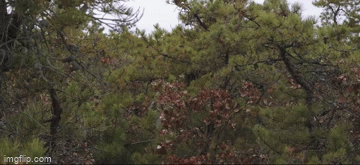
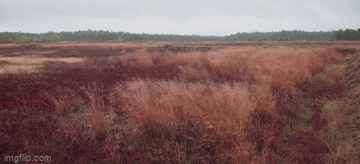





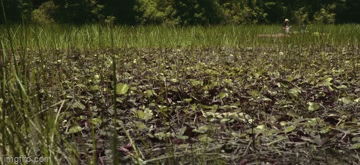
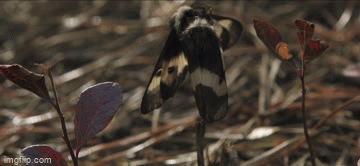
The Pine Barrens
#pine barrens#new jersey pine barrens#coastal forest#it's a shame that when you search 'new jersey documentaries' all that comes up#are things like 'camden: america's most dangerous city' and 'newark street wars' and 'the real sopranos'#the pine barrens are an ecological treasure with orchids and carnivorous plants found no where else in the world#and still has people living very traditional lifestyles as cranberry farmers blueberry farmers clamers and fishermen#lots of interesting folklore came out of there like the jersey devil#captain kid#the black doctor#peggy clevenger: witch of the pine barrens#jerry munyhun#wizard of the pines#lots of interesting people too#like elizabeth c white#first person to successfully cultivate blueberries#and elizabeth kite#who inadvertently started the eugenics movement#with her study of the kallikack family#historically the pine barrens was a place for outlaws#and religious rejects#with many pirates bandits quakers and jews fleeing there from ny and northern nj#other places in america like the Ozarks and the great smokey mountains have tons of documentaries about the people and traditions that lived#there#but not nj#which is shame because there are still wilderness and historic areas worth being preserved#the pine barrens are errie but beautiful#eerie because the vegetation is so dense and everything starts to look the same#and the bog iron makes the bottom of coves and streams dark red#like the bottom of hell is there
25 notes
·
View notes
Text
BAPHOMET

WHO ARE THEY?
Baphomet is a Pagan deity that represents duality and balance. Most people work with Baphomet in order to become more peaceful, understanding, and balanced. Baphomet is often referred to as ‘Satan’ or ‘The Devil’, which isn’t true. People mostly say that because Baphomet has pentacle on their head and they have the head of a goat. A goat represents fertility and spiritually.
BASIC INFO:
Appearance: in some Pagan traditions, Baphomet is seen as a symbol of balance and unity between the Divine Masculine and Divine Feminine, represented by a human figure with the head of a goat. In other traditions, Baphomet is considered the personification of the primordial chaos and oblivion. In some folklore and myths, Baphomet was a symbol of fertility and reproductive power, and was often depicted as a hermaphrodite or a hybrid creature.
Personality: Baphomet is often depicted as a fierce and formidable entity, representing the destructive and chaotic forces of nature. Although they can seem intimidating and unpredictable, they also have a nurturing and compassionate side. Their personality is often reflected in the dual nature of Baphomet, where they are both masculine and feminine, gentle and fierce, peaceful and intense. They are a symbol of balance and unity, the meeting point of opposites and contradictions.
Symbols: pentagram, head of a goat, human body with an animal head, pentacle, sword, key, male and female, and the words "As above so below"
God/Goddess of: sexuality, demonic forces, wisdom, nature, balance, darkness, and pride
Culture: Demonic
Plants and trees: rosemary, lilacs, irises, lavender, aconitum napellus, black walnut, and cacao
Crystals: obsidian, amethyst, onyx, crystal quartz, garnet, black tourmaline, ruby, selenite, and brown quartz
Animals: black goats, snakes, wolves, ravens, dogs, oxen, and black cats
Incense: dragon’s blood, black musk, opium, frankincense, and mag champa
Colours: black, white, yellow, red, green, purple, gold, and dark blue
Tarot: The Chariot, The Hermit, The Empress, and The Devil
Planets: Saturn and Mars
Days: Saturday, Tuesday, Walpurgis Night, Halloween, Blavatsky Day, The Winter Solstice, and Yule
Parents: Lucifer and Lilith
Siblings: none
Partner: none
Children: Azazel and Astaroth (not official)
MISC:
• The Union of Male and Female: Baphomet is often depicted with both male and female characteristics, symbolizing the unity of the masculine and the feminine.
• The Balance of Good and Evil: Baphomet is an entity of balance, symbolizing the interplay between good and evil in nature and in life.
• The Sabbatic Goat or The Horned One: Baphomet is often portrayed as a goat-like creature with horns.
• Harmony
• Knowledge and wisdom
• Power and strength
• Spiritual knowledge and enlightenment
• A balance scale, which represents balance and harmony
• The word "Solve and Coagulo", which translates to "divide and combine" and refers to the dualism nature of Baphomet
• Rebellion and defiance
• Freedom and individuality
• Unity and togetherness
• Chaos and disorder
• Sexuality and sensuality
• Nature and wildness
• Protection and defense
• Magic and witchcraft
FACTS ABOUT BAPHOMET:
• Name: Baphomet is named after the Greek word "baphos," which means "the virgin."
• Symbol of the Satanist: the imagery of Baphomet has become a symbol of the Satanist church, with variations on the iconography being used by other satanists.
• Relatioinships: Baphomet is a figure in the Gnoetics who often represents the synthesis of female and male principles.
• History: the figure of Baphomet is believed to have originated among Gnostics, a group who blended early Christian and Greek-Roman mythology.
• Role: they are believed to represent the balance of male and female and the union of good and evil, acting in many ways as a symbol of the Satanist.
• Associations: they are often associated with the concept of balance, as well as various other aspects of Gnosticism, such as the concept of the duality of existence, the synthesis of opposing forces, and the merging of opposites.
• Connection to the beast: it is said that Baphomet symbolized the balancing of the inner animal nature with spirituality and intelligence.
• Nature: Baphomet is considered to be a symbol of the balance of opposites, blending the masculine and feminine elements into a singular whole.
HOW TO WORSHIP BAPHOMET:
You must ask Baphomet if they want to work with you. Baphomet is a deity, so you shouldn’t be commanding them or telling them what to do. You must be patient with them. (Watch out for trickster spirits). Respectfully ask them to give you a sign, and if you’re respectful enough, you might as well get an answer.
If they answer YES, you can create an altar to be more connected, but if you cannot then have something that reminds you of them. It can be small and simple.
If they answer NO, respectfully apologize for disturbing them. If you connected through an object then you don’t have to throw it out, you can cleanse it and get rid of that intention. If it’s something from nature, you can bury it.
HOW TO PRAY TO BAPHOMET:
To begin, you can address them by name and say something like:
"Great Lord Baphomet, keeper of balance and bringer of harmony, I come to you seeking your wisdom and protection. I offer myself to you, my heart and my spirit, and I ask for your blessing in this prayer."
"Thank you, great Lord Baphomet, for walking by my side and guiding me on this path. I depart from this space with balance and peace in my heart and with a sense of purpose and direction. Hail Lord Baphomet.”
WHAT ARE SIGNS THAT BAPHOMET WANTS ME TO WORK WITH THEM?
If your request to work with Baphomet has been accepted, you can look for these signs:
• A strong connection or attraction to Baphomet.
• Desire to explore or study Baphomet's teachings.
• Wanting to explore your own masculinity or femininity and find balance in your own nature.
• Desire to challenge social norms and embrace your own unique identity.
• Feeling of being guided by a force outside yourself.
• Feeling of being called to a higher purpose or feeling like there's more to your life than just everyday existence.
If your requests to work with Baphomet have not been accepted, you may see the following signs:
• Your intuition may lead you in a different direction and away from their teachings.
• Signs in your life may not align with their teachings or you may feel unclear or uncertain regarding their energies.
• Dreams and meditations may involve different figures or energies, and you may feel a lack of connection with Satan or Baphomet's energies.
Overall you need to be respectful of deities denying your request.
OFFERINGS:
• Your time.
• Meditation.
• Communication.
• Carving Baphomet’s symbol or name into a candle.
• Any kind of art of them.
• Being respectful.
• Learning about them.
• Candles.
• Liquor.
• Ropes.
• Incense: dragons blood, black musk, frankincense, etc.
• Animal skulls, bones, horns, etc.
��� Dark or red flowers
DEVOTIONAL ACTS FOR BAPHOMET:
• Reject traditional values and social norms
• Embrace your masculinity and femininity
• Live a chaotic, self-guided life
• Reject authority and control
• Seek freedom and autonomy
• Balance your masculine and feminine energy
• Practice self-love and self-acceptance
• Live a hedonistic lifestyle of pleasure and indulgence
• Be brave, adventurous, and open to new experiences
• Live an unconventional life.
IS IT SAFE TO EAT OR DRINK AN OFFERING I GIVE TO THEM?
It is not recommended to eat or drink an offering that was given to Baphomet. Baphomet is a God of excess and self-indulgence and represents the darker sides of the human experience. Eating or drinking an offering made to Baphomet can carry risks of negative side effects, such as a lack of balance in one's life, a sense of greediness or addiction, or other negative energetic effects. Instead, it's recommended to dispose of an offering made to Baphomet in a respectful and safe way.
#fyp#fypシ#fypシ゚viral#fypage#fyppage#tumblr fyp#paganism#satanism#satanist#deity#deity work#deity worship#occult#baphomet#pagan#god#goddess#information
140 notes
·
View notes
Text
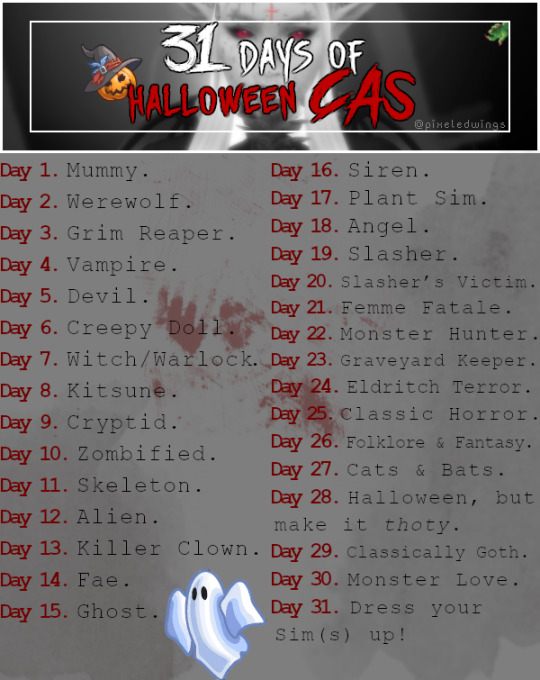
31 Days of Halloween CAS ! 👻

i haven't had much interest in the sims lately (i blame bg3) so in an attempt to get myself playing more, i made a 31 days of halloween cas challenge ! calling it a challenge feels weird, i've never made something like this and sharing it was a bit of a last minute decision 😅 i just wanted some occult focused prompts, but maybe someone else will like it too !! i guess you can call it my simblreen treat; halloween is my favorite holiday afterall ! list under the cut, & happy halloween !!
plz feel free to use #pixeledhalloween and/or @ me if you use this !! i love spooky sims sm 🥺💓
Day 1. Mummy.
Day 2. Werewolf.
Day 3. Grim Reaper.
Day 4. Vampire.
Day 5. Devil.
Day 6. Creepy Doll.
Day 7. Witch/Warlock.
Day 8. Kitsune.
Day 9. Cryptid.
Day 10. Zombified.
Day 11. Skeleton.
Day 12. Alien.
Day 13. Killer Clown.
Day 14. Fae.
Day 15. Ghost.
Day 16. Siren.
Day 17. Plant Sim.
Day 18. Angel.
Day 19. Slasher.
Day 20. Slasher’s Victim.
Day 21. Femme Fatale.
Day 22. Monster Hunter.
Day 23. Graveyard Keeper.
Day 24. Eldritch Terror.
Day 25. Classic Horror.
Day 26. Folklore & Fantasy.
Day 27. Cats & Bats.
Day 28. Halloween, but make it thoty.
Day 29. Classically Goth.
Day 30. Monster Love.
Day 31. Dress your Sim(s) up!

#ts4#sims 4#sims#the sims#ts4 gameplay#sims 4 cas#sims 4 cas challenge#ts4 cas#sims 4 challenge#create a sim#halloween#simblreen#ts4 occult#simblr#pixeledhalloween
166 notes
·
View notes
Text
Invisibility In Witchcraft
Invisibility is something we see in all different types of media for a very long time - superhero comics and movies, Harry Potter book and movie series, fairy tales and lore from several countries. It is one of those powers that even in modern science they have been trying to create true invisible cloaks and armor for military use. Though invisibility in literature and movies is not the same as when we refer to it in witchcraft. So let us talk about this aspect of magic today, a brief history and even some modern day spells.

What is Invisibility Magic?
Invisibility magic is magic of concealing oneself, others, places and objects from detection. As stated above it is not in the literal sense of you vanishing from sight however think of it like a cloaking device - it helps you go unnoticed or makes you less likely to be observed. Of course take this with a grain of salt - magic has its limits. However, an invisibility spell can help you as an additional buffer of protection. Often times, invisibility spells are to ensure special items you have hidden away go undetected such as your grimoire on a bookshelf or sigils of protection scattered about your home, it can also be used for oneself or others to help them travel in safety.
History
Old manuscripts and grimoires dating back to the 1600s have been found describing spells for invisibility. These such spells include chanting, potions and rituals said to help the caster ‘vanish’ from people’s views or travel unseen. One of these manuscripts has been archived if you wish to see it here and another here please keep in mind these are old scripts and may not be safely done today - do your research on ingredients and if they are safe to use modernly.
Though invisibility in witchcraft is a bit harder to dig up, invisibility has a long and rich history in religion, folklore and tales. Many creatures, spirits and persons of lore, legend and story through the centuries are said to vanish without a trace or go unseen by normal people.
In the cases of witchcraft though it is harder to find information on it, as listed above some old manuscripts were found listing methods of invisibility. Some other methods listed have been carrying the heart of a bat or a toad or frog under one’s garments (or their right arm) can render you harder to detect. Others speak about how black hens and chickens may be related to invisibility by using their feathers as charms. Mercury historically was used as a method to be deemed invisible, with using it to make jewelry or charms a popular method - however perhaps not safe in modern day terms. Another grimoire called “The Second Book of the Secrets of Albertus Magnus” states that wrapping an Ophethalminus stone in a Laurel leaf will render the wielder invisible. What is an Ophethalminus stone? It is commonly accepted and believed he was referring to a Lapis Lazuli stone.

Correspondences
Of course modern day invisibility calls for more modern day correspondences - to help insure the user and caster are using ingredients that relate to what they seek. Below is a brief list of some correspondences - please research before ingesting or applying anything to the skin. Research possible allergic reactions, side effects and complications of medicinal herbs and plants. Research all stones you use before subjecting them to heat, water or oil.
Plants and Herbs:
Amaranth
Black Hellebore (toxic)
Cherry/Cherry Bark
Chicory
Devil’s Shoestring/Black Haw
Edelweiss
Fern
Heliotrope (toxic)
Henbane (toxic)
Laurel
Mistletoe
Monkshood
Poppy
Sow’s Thistle
Tansy
Wolf’s Bane (toxic)
Colors:
Black
White
Gray
Lavender
Elements:
Air
Water
Spirit
Crystals and Stones:
Amethyst
Calcite
Lapis Lazuli
Moonstone
Obsidian
Peacock Ore
Silver Topaz
Smokey Quartz
Metals:
Mercury
Silver
Tools and Other Items:
Mirrors (Black Mirrors)
Sigils
Smoke
Black Ink
Toads/Frogs (symbolism)
Bats (symbolism)
Mist and Fog
Wind
Chicken Feathers
Moonlight
Black Candles
Gray Candles
Modern Spells (note some are not mine, they will be sourced and linked to their original posters)
Invisibility Enchantment- Wishful- Seeker
Some Spellcraft for an Invisibility Ring - smoke-weed-and-hail-thor
Air cloaking glamour - thegildedraven
Invisibility Spell to be Forgotten - breelandwalker
Night walking invisibility and protection glamour - magicianmew
(cheap) Invisibility Spells for Anxious Witches - becomingwitchy
Invisibility - Pathfinder inspired Sachet Spell - Mine!
Shadow Usul’s Night Invisibility Glamour Sachet - Mine!
Chameleon Eye Shadow - Totally Spies Spell - Mine!
Like what I post? Want to support me or buy me a delicious coffee? Feel free to check out my Ko-Fi Page!

#witchcraft#masterpost#invisibility#glamours#invisibility in witchcraft#invisibility in magic#long post#invisibility spells#correspondences#willow's grimoire
271 notes
·
View notes
Note
basic witch question: how can i study and research folk magic and historical witchcraft?
I've been trying to search like this: "name of country/place +folk magic" on academic article sites but I haven't found much practical stuff and sometimes I don't find anything.
thank you for your attention
Good question!
The first thing you'll want to do is set aside the idea that you're going to find overt and accurate historical descriptions of witchcraft as we define it today. VERY few people who practiced some form of folk magic would have identified themselves as witches, because up until very recently, it was something you could be arrested, fined, and executed for doing. Even just the suspicion of such was enough to cause panics and widespread paranoia. What you're most likely to find is a collection of folk beliefs ABOUT witches and witchcraft, rather than actual witchcraft practices.
There are plenty of folk magic practices that resemble things we do in modern witchcraft, but they wouldn't have been called witchcraft by the people doing them back in the day. If you nailed a cluster of broomstraw over your door or scattered eggshells in your garden, it wasn't to cast a spell - it was just The Done Thing to keep trouble out of your home and help the crops grow.
Be prepared to find a lot of Christianity blended into the practices you do find. During the Christianization of Europe, new beliefs blended with older ones and created some very interesting regional amalgamations. So you'll often find invocations of saints or the Blessed Virgin, or particular psalms or prayers included as essential parts of certain charms. (It's also worth noting that the recitation of certain prayers was a method of short-term timekeeping, since they didn't exactly have clocks or timers.)
Be prepared also to find a lot of references to the Devil and devil-worship. For several centuries, the idea of witchcraft and demonolatry (consorting with and calling upon demons for power and supernatural aid) was synonymous across much of the Western world. It's very difficult to find a mention of witches in contemporary medieval or renaissance literature that is not immediately accompanied by some mention of devils or demons or familiars. This is a record of the superstitions of the day, NOT the practices of actual witches, no matter what Margaret Murray would have us believe.
To find the folk magic practices, if you can't find them by searching the term outright, study the regional folklore of the place you're interested in. Look particularly for anything to do with healers or spirits or fairies or ghosts or local superstitions. Where you find these, you will find whatever regional protection rituals the country people used to ward off trouble from ethereal beings, and possibly references to other related practices for love or luck.
Naturally, if you go back to classical antiquity (Greeks and Romans) or further, things will look very different. It all depends on the time and place.
It's important to note that most of the books we have which document these beliefs were written during the 19th-20th century spiritualism and occult fads, and while there is an earnest effort in most of them to record things academically from good sources, they should still be taken with a grain of salt.
Here are some titles I've found useful in my studies:
British Goblins: Welsh Folk-lore, Fairy Mythology, Legends and Traditions (Sikes, 1880)
Culpeper's Complete Herbal and English Physician (Culpeper, 1850 edition)
Fairy and Folk Tales of the Irish Peasantry (Yeats, 1888)
Magic and Husbandry: The Folk-Lore of Agriculture (Burdick, 1914)
Plant Lore, Legends, and Lyrics (Folkard, 1884)
The History of Witchcraft and Demonology (Summers, 1926)
The Superstitions of Witchcraft (Williams, 1865)
You can find these and many similar titles on Project Gutenberg or Global Grey Ebooks. (And since they're in the public domain, they're free and legal to download!)
One final note - If you run into anything that mentions "folkish" traditions, bloodlines, or theosophy, put it down and walk away. That direction lies the pipeline to racist hate groups.
Hope this helps!
264 notes
·
View notes
Text
Songs for Writing playlists— The Masterpost

Songs about Animals
Songs about Water
Songs about Fire
Songs about War, Warriors, Rebellions, Revolutions, etc
Songs with Religious Themes
Songs about Witches & Magic
Songs about Teeth, Vampires, & Blood
Songs about Birds, Wings, Feathers, & Flight
Songs about Royalty, Ruling, & Kingdoms
Songs about forests, Trees, & Wood
Songs about Gardens, Plants, & Botanicals
Songs with Themes of Feminine Rage, Girl Power, & Feminism
Songs about Death & the Dead
Songs Related to Home, Homesickness, Leaving Home
Songs Related to the Moon
Songs Related to the Sun
Songs Related to the Cosmos & Celestial Bodies
Songs about Demons, Devils, & Monsters
Songs with Ties to Fairytales, Folklore, & Myths
Songs about Shadows & Darkness
Songs about Games, Competitions, & Victory
Songs about Weather & Natural Disasters
Songs for Warriors, journeys, & Wanderers
Songs about Secrets, Lies, & Truth
Songs about Sleep, Dreams, & Nightmares
Songs About Ghosts & Haunts
Songs About Hunters, Prey, & Predators
Songs about Gems & Metals
Genre: Urban Dystopia
Genre: Romance
Character: Villains & Antiheroes
Character: The Chosen One
Character : The Lovers
Character : Assassins, Killers, Criminals
Character: Gods & Immortals

Notice a theme or topic I’ve missed? Send them to my ask box!

Check out the Spotify— here — to view the full playlists
#music recs#music resources#playlist recs#writers of tumblr#songs for playlists#writing reference#masterpost
48 notes
·
View notes
Text

Hey witches! As nature awakens from its winter slumber and the days begin to lengthen, we come to Ostara, the spring equinox, a time of balance, renewal, and fertility.
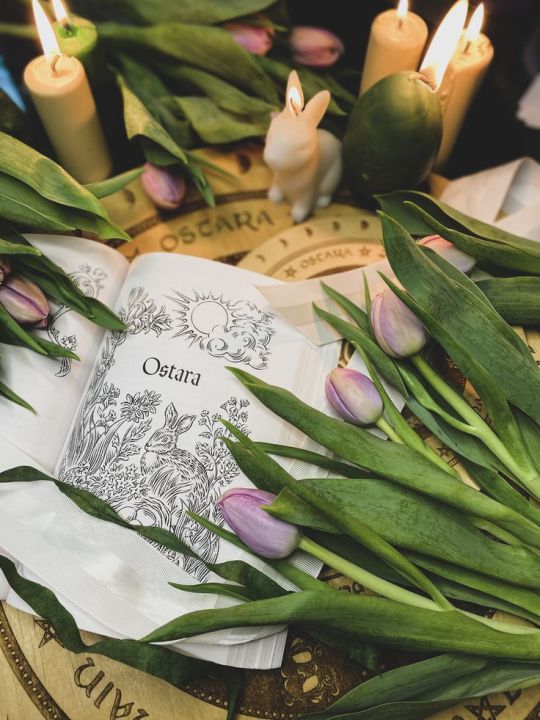
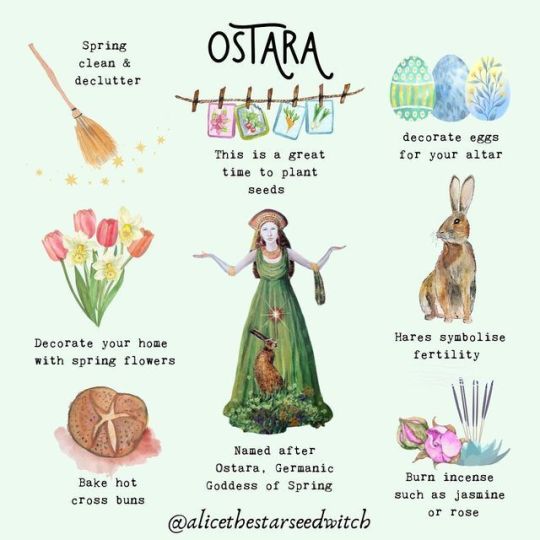
Ostara, also known as the Spring Equinox or Eostre, is a pagan holiday celebrated around March 20th in the Northern Hemisphere (September 20th in the Southern Hemisphere). It marks the arrival of spring and the balance between light and darkness as day and night are of equal length.
The holiday is named after the Germanic goddess Ostara, who represents fertility, renewal, and the dawn. Many customs and symbols associated with Ostara are rooted in ancient pagan traditions and folklore. Some key aspects of Ostara celebrations include:
Celebrating the Equinox:
Ostara marks the arrival of spring and the rebirth of life in the natural world. It's a time to celebrate the earth's renewal, the return of longer days, and the promise of new beginnings. Here are some ways to honor Ostara and celebrate the beauty and bounty of the season:
🌱 Planting Seeds:
Get your hands dirty and plant seeds in your garden or indoor pots to symbolize growth, abundance, and new life.
🥚 Decorating Eggs:
Embrace the ancient tradition of decorating eggs, a symbol of fertility and rebirth. Paint, dye, or decorate eggs with symbols and colors that represent the themes of spring and renewal.
🌸 Nature Walks:
Take a walk in nature and immerse yourself in the sights, sounds, and scents of spring. Notice the blooming flowers, budding trees, and chirping birds as you connect with the energy of the season.
🕯️ Rituals and Ceremonies:
Hold a ritual or ceremony to honor the equinox and invoke blessings for balance, harmony, and renewal in your life. Light candles, burn incense, and offer prayers or invocations to the goddess Ostara and the spirits of spring.
🍃 Feasting and Sharing:
Gather with loved ones for a festive meal or potluck to celebrate the abundance of the season. Cook and share dishes made with seasonal ingredients such as fresh greens, herbs, and spring vegetables.
Here are some ideas for recipes for Ostara:
Hot Cross Buns (Cross Quarter Buns):
These tasty pastries are often enjoyed during the pre-Easter season of Lent. The decorative cross on top represents a Christian symbol, but you can infuse your own Pagan beliefs into it.
Consider associating the four quarters of the cross with elements, directions, moon phases, seasons, Tarot suits, or fire festivals.
To make your own, start with your favorite muffin or roll recipe and create an X on top using raisins, currants, or scored dough.
Mint Chutney:
Mint chutney is a versatile condiment that pairs well with various dishes. Keep in mind that the term “chutney” covers a wide range of culinary options.
Roasted Lamb:
For many ancestors, lamb was a symbol of spring and rebirth. Roasted lamb can be a delicious centerpiece for your Ostara feast.
Dairy Products:
Dairy is associated with fertility and new life. Include cheese, milk, cream, butter, and other dairy items in your Ostara meals.
Eggs:
Eggs symbolize new beginnings and potential. Hard-boiled eggs, deviled eggs, or egg salad are great choices.
Spring Greens and Fresh Herbs:
Celebrate the awakening of nature by incorporating fresh greens like spinach, kale, and spring onions. Use herbs like parsley, chives, and dill to add flavor and vibrancy to your dishes.
Seasonal Crops:
Asparagus and fiddlehead ferns are early spring crops that align perfectly with Ostara. Check in your area what is available!
Marshmallow Peeps:
While not traditional in ancient practices, these colorful marshmallow treats have become an iconic part of modern Ostara celebrations
Embrace the Magic of Ostara:
Whether you're planting seeds, decorating eggs, or simply basking in the beauty of nature, Ostara offers a magical opportunity to connect with the energy of spring and celebrate the renewal and rebirth of life. So gather your friends, set your intentions, and let the magic of Ostara guide you on your journey into the light! 🌼🌿
Spring is a time of rebirth and growth. Consider working magic related to these themes.
Explore magical aspects of:
Serpents: Symbolism and folklore.
Eggs: Associated with new life.
Spring Flowers: Use blooming flowers in your magical workings.
Daffodils: Early bloomers with magical purposes.
Rabbits: Beyond the Easter Bunny.
Magical Gardening: Growing plants as a magical act.
Remember, Ostara is a time to celebrate the return of light, growth, and the promise of warmer days ahead. 🌸🌼🌞
Learn more:
learnreligions.com
Sabbats: A Witch's Approach to Living the Old Ways by Edain McCoy(amazon.com)
Llewellyn’s Sabbat Essentials BOX SET (amazon.com)
witchcraftedlife.com
magickalspot.com
teaandrosemary.com
#queue the magick#witchcraft#witchblr#reference#witch#magickkate#kitchen witch#sigils#green witch#witchy#sabbats#ostara#wheel of the year
28 notes
·
View notes
Text
Just thinkin' about Nightshade: The Meaning of a Name
This started out as me thinking about how much I love their beast mode, and turned into thinking about their designation.

So, for those who might live in regions where Nightshade doesn't grow naturally, Nightshade is massively, massively poisonous.
So much so, that it's called Deadly Nightshade. In the UK, it's famous for being the plant that Macbeth probably used to poison Duncan's troops.
I always grew up hearing it called Belladonna, which is part of its Latin name, Atropa belladonna.
"Atropa" comes from "Atropos", the name of the Grecian Fate who severs the thread of life. (If you've seen the Disney Hercules movie, this is the Fate who cuts the thread with scissors.)
It has a beautiful purple and yellow flower, more reminiscent of Tarantulas' colours than Nightshade's.
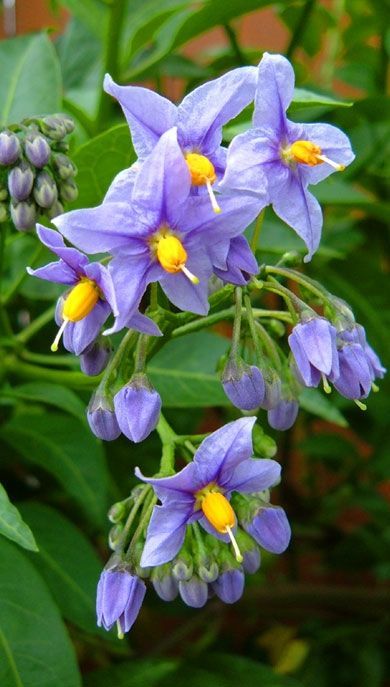
It also features little black/dark purple berries.
Now, Nightshade is a great name for a bot that turns into an owl.
The name doesn't necessarily have anything to do with the plant.
However! I'm overthinking it anyway, so let's goooooo
Bad Implications!
What's super interesting is that Deadly Nightshade has some symbolic meanings in the UK/Europe; Namely, that Nightshade is one of the Devil's chosen plants, and that eating it (especially the berries) would bring Satan's wrath down upon the consumer as punishment.
It can represent danger, risk, betrayal, punishment, hopelessness, and sometimes even murder.
Plants with similarly mythologised toxic properties are Pennyroyal and Juniper-- Both of which can harm humans in various quantities.
(Interestingly, Pennyroyal is still sold in the UK as an insect repellent, and I even have some in my closet and drawers to repel moths-- But it is most famous as a risky historical abortifacient. I am usually asked for ID when I buy it in London Bridge Market, and they ask if you are familiar with it's use/inform you not to consume it when you buy it.
Juniper is most famous for being a common ingredient in sloe gin, but only in careful amounts. We've seen people in A&E come in with kidney pains from trying to make homemade gin, who ended up poisoning themselves by using the wrong type of juniper berry, or by concentrating it too much. Juniper was also considered a risky historical abortifacient.)
But in regards to Deadly Nightshade, a lot of people have hurt themselves trying to take advantage of its psychoactive properties-- Primarily in the form of the hyoscyamine and scopolamine (tropane alkaloids) found in the plant. However, the dosage is too finnicky, and it's way too easy for someone to poison themselves by accident. It's happened before. :( This plant is far too dangerous to use for these purposes. Do not consume!
But because of this connection with psychoactive properties, Deadly Nightshade is also sometimes symbolic of altered states of mind, having visions, or esoteric/magical thinking.
You can see this in a few fine arts works throughout history, various bits of folklore, and other historical media such as stage plays since audiences would be familiar with this plant as being a potential poison (thus making it a good choice for a playwright to work into a story).
Medical Applications!
The medication Atropine was first created via concentrated extracts derived from Deadly Nightshade. It has multiple medical applications, and can be concentrated from other members of the Nightshade family of plants, not just Belladonna.
Interestingly, although it can be poisonous on its own if someone decides to munch on the plant or its berries (a bad idea, do not eat any part of this plant ever), medically concentrated Atropine can be used in healthcare environments when administered appropriately to help address certain organophosphate poisonings by blocking muscarinic receptors by way of disrupting the neurotransmitter Acetylcholine.
Something that is sort of interesting is that historically, people used to put small amounts of liquid concentrated Deadly Nightshade into their eyes, as this resulted in very dilated pupils. This was considered a desirable cosmetic effect, hence the "Belladonna" part of the plant name-- It means "beautiful woman"! And Nightshade absolutely has large, round eyes with big pupils. (Do not put this shit in your eyes, it is a bad idea. Do not fuck with poisonous plants in general. Just need to be super clear on this!)
Again, that's an owlish trait, and it doesn't necessarily have to do with the plant. But I like that it could go either way.
I've also spotted Deadly Nightshade growing in overgrown cemeteries in the south of England, typically those that are near wooded/forested areas. So it's interesting that Nightshade got their alt-mode in a cemetery near a forest, since this plant is known to grow in woodlands.
But I wonder if Nightshade's name might have multiple implications; Especially considering their relationship with Tarantulas-- who we still haven't seen again, as of yet anyway-- it will be interesting to see how things play out.
Hopefully this is at least interesting trivia! :)
Also, Obvious PSA: Once again, don't eat any of the plants/flowers/berries mentioned here, you can die or suffer a surprisingly large amount of pain/potential organ damage. Either way, don't eat this stuff.
#nightshade#tfe nightshade#earthspark#maccadam#maccadams#long post#just thinkin'#tfe#medbay posting#transformers earthspark
87 notes
·
View notes
Note
Where did the names for them came from and why those?
NOTE: i was going to answer this quickly but then fell down a rabbit hole of reading about medieval moldavian naming conventions for an entirely tangential reason to this ask and opened so many pdfs my computer crashed. :) enjoy
Lăcrămioara Strigoi and Leopold Lupei are both Romanian!
Lăcrămioara means "little teardrop"/is a diminutive of lacrima (related to lachrymose, ie; tears/crying/etc). Furthermore, it's the Romanian name for the plant Lily of the Valley, which is heavily associated with the tears of both The Virgin Mary as well as Eve.
You may also see me call him just "Mioara"-- which is pulled from her name, but also can be a diminutive of the Romanian form of "Mary", and also means "little lamb".
Given Lacramioara has tear-based corpse paint, and marian/plant/sheep themes, it's more than fitting!
As for Strigoi-- it's not an actual surname. It'd be kind of insane if it was. Strigoi are a Romanian folkloric creature generally agreed to be the origin of vampire myths (although in many they take on a description more akin to witches or warlocks). Admittedly, I didn't base a lot of her stuff on actual strigoi myth, but he's not actually a vampire-- just an angel that resembles vampires so as to better hunt them and other creatures of the night. so it's fine lol
Strigoi wasn't Lacramioara's original surname; from what I can glean, it's likely his name was "Lăcrămioara, of [Father's name]" or "of [village-- place pending, moldavian]", but I'm still tinkering with that, since sources are hard to find. I saw somewhere that most names up until the name reform were "given name, fathers name, grandfathers name," but im having trouble finding places where this is backed up. But for now, just consider the "strigoi" surname a title of sorts from Michael <3
as for Leopold, it actually means "Brave People"-- unrelated to the latin "leo". But of course, it can be shortened to that and resembles it, because I did still want to draw the leonine association. Lupei is, as a matter of fact, a real surname, meaning "wolf"-- but it also wasn't his original surname either. I wanted his name to sound important, and also I've just been DYING to use the name Leopold in something since I was a child for reasons related to Looney Tunes
If it matters, Leopold is originally from Wallachia. Fun fact.
Johnny Strings and Cross DeVille are both based on The Devil Went Down to Georgia, a song by the Charlie Daniels band. It tells the story of the devil, down on his luck and short on souls, who challenges a boy to a fiddling contest with the bet being that if the boy wins, he gets a fiddle of gold, and if he loses, the devil gets his soul. It goes without saying that this song is essentially theological canon to me.
Johnny Strings, however, in this incarnation, is a butch bisexual woman and the fiddle is now a golden guitar, since I wanted to take on a more rock-leaning inclination with it.
Cross DeVille is both a cross fox in his design-- but his name alludes to Crossroad Demons, which he is. I also used the DeVille just because I wanted him to give the impression of a fancy city boy
(as is Mephistopheles, who is the archetypal crossroads demon)
You may have guessed, but Godhead Death Sentence in general is meant to have a very campy tone to the world, so a lot of the names will be obvious allusions or puns, when I can do it.
22 notes
·
View notes
Text
pumpkins

Halloween just wouldn't be Halloween without large pumpkins grimacing and grinning at us from steps and railings, glowing from within with a ghastly light as the night falls thick around the neighborhood. The pumpkin jack o' lantern has become almost synonymous with Halloween, from the grinning pumpkin head worn by Ichabod Crane's Headless Horseman to Pillsbury's ready to bake tubes of colored pumpkin faced cookie dough. The pumpkin isn't just for jack o' lanterns either! The second the weather gets the first sharp bite of autumn to it out comes the pumpkin spice everything! Pumpkin coffee, pumpkin bread, pumpkin pie - its not even just for food. Pumpkin candles and tiny decorative pumpkins everywhere! If there is one overwhelming symbol of autumn, at least in most of the Western world, surely it must be the pumpkin. In fact, the pumpkin is so overwhelmingly 'autumn' themed that both Halloween and US Thanksgiving claim it as a vital part of the party.
So would it surprise you to learn that the pumpkin we recognize these days is a North American plant and its autumnal rein of power is fairly new?
Would it surprise you to learn that the jack o' lantern once looked very different than it does today?
(not if you spend time in certain circles of tumblr but we're going to dip in anyway)
Once upon a time, so the Irish story goes, there was a very lazy man called Stingy Jack. If he had only been lazy, this story would be shorter but he was also desperately clever. There are quite a few versions of the story but the basic of it follows a familiar route. Man has done something that either puts him in a spot of trouble with his neighbors or else is just feeling so lazy that he can't even fulfill one of his wants. Either way, the Devil sees an opportunity and shows up, offering to help Jack with his problem. Jack, like most folklore heroes, agrees. The Devil then turns himself into a silver coin, or climbs an apple tree or something of the kind, fulfilling his part of the bargain. Jack, however, has the power of God and anime crosses on his side and proceeds to use them to trap the Devil in his shapeshifted form or up a tree. Jack keeps him there until the Devil agrees to never bother Jack again. The Devil agrees, life goes on for Jack as per normal and one day he dies. He's been a shifty, stingy Jack so Heaven won't take him but now, pride still bruised or promise still in place, neither will Hell. All Jack gets from behind the closed fiery gates is a single thrown coal and the order to 'get lost'. And so, rejected by the afterlife yet still very much dead, Jack must wander the Earth forever, the single glowing coal the only light to guide him where he's put it in a carved vegetable to help light his way. Traditionally, people put out jack o' lanterns each Halloween or Samhain or All Saints/Soul's Day to both ward off evil spirits and to help guide the friendly dead, like wandering Jack, home.
Thing was, this story is older than the European discovery of the New World. Jack and his will o' wisp lantern, and the subsequent 'lanterns' left out by others later on, was a carved turnip.

Yep. That would scare me away too if I saw it left outside someone's house. Anyway, the carved turnip, or other useful tuber, stayed the go-to vegetable when it came to carved jack o' lanterns lighting up the late October nights until the mid 1800s when the Irish Famine drove many to immigrate to the United States. Traditions are adaptable and who would bother with a turnip when there were great, round, bright and easily hollowed out pumpkins right there? In no time at all, the idea of pumpkin jack o' lanterns had spread across the US and bam! A new king of autumnal vegetables was born.
Except the pumpkin is a fruit. A berry in fact.
Yeah, I had to wiki that one too.
The jack o' lantern isn't the only superstition around pumpkins.
In Appalachian tradition, if a cow eats pumpkin seeds it will stop giving milk. Pumpkin seeds are also used to get rid of tape worms in a process that involves fasting, milk and castor oil.
Pumpkins should always be planted on Good Friday for the best results.
Pumpkins are seen as signs of fertility, prosperity and abundance.
and finally, eating a pumpkin stalk will make you foolish (because eating it in the first place wasn't already proof)

#folklore#superstition#cottagecore#halloween#pumpkin#jack o lantern#pumpkin spice#happy halloween#stingy jack
16 notes
·
View notes
Text
ima take a moment to talk about those. by which i mean a well known spirit from native american folklore, whose name starts with W. which i won’t be writing here, because (1) many believe that saying, reading, writing or even hearing the name causes the entity to be able to find you, (2) I’m not native and i don’t want to be disrespectful, and (3) even though i’m kind of a skeptic, I’m not gonna tempt fate here or anything. -_-
there’s been a recent rise in…popularity? i guess you could call it? in regards to W. they’ve been featured in media like until dawn (video game), netflix shows, horror franchises and more. W are being misrepresented, usually being incorrectly portrayed as unnaturally tall humanoid creatures with a deer skull for a head, where in the original folklore, they don’t look like that at all (source. just a warning, W is mentioned by name many times in the article.)
bearing this in mind, if anyone wants to write about deer-like monsters, here are some other cool creatures to read about instead of the W!
skulldog (furry fandom). obviously not a deer, but it’s a humanoid creature that has a skull in place of a head.
Telltale’s ‘The Wolf Among Us’ interpretation of the jersey devil
deerman; a north american cryptid treated similarly to the mothman or the sasquatch.
appalachian not-deer
(my personal favorite) Leshy, Leshen, or Spriggan from the Witcher franchise. pictured here:
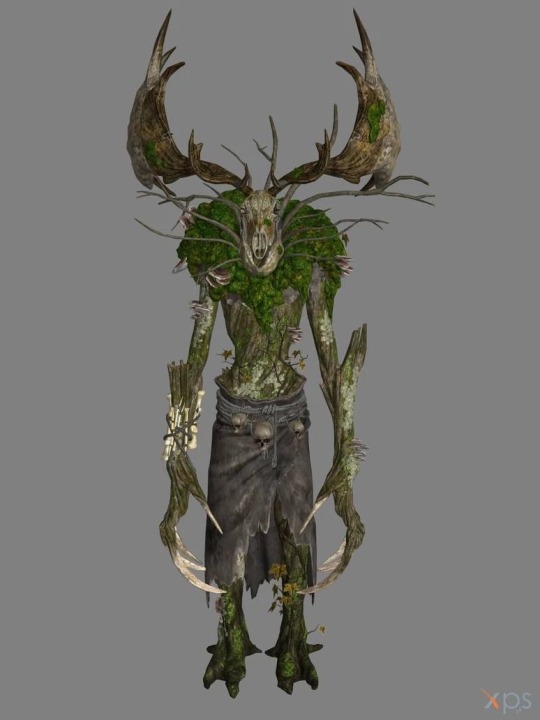
the reason i like this one is that it’s a clear nod to Cernunnos from celtic mythology, and its design is really cool and unique in my opinion, made of wood rather than skin and bones. also, in addition to being human hunters, they have the ability to manipulate plants, as well as summon crows and wolves. so y’know, that’s super badass.
anyway, i don’t write about cryptids or monsters, but i LOVE reading about them and researching them. so if anyone who isn’t native is considering writing about W, id ask them to take a look at this first <3 and btw if i missed anything feel free to reblog or message me with more information!
#monsters#cryptid#cryptids#skulldog#jersey devil#not deer#appalachia#folklore#paranormal#monsterfucker#the witcher#geralt of rivia#leshy
202 notes
·
View notes
Note
Can you do op characters reacting to their s/o that can turn into a wendigo ( jinbei, kid, katakuri, and killer. ) plz
A MONSTER IN DISGUISE
Taglist: @charlotte-katacutie-blog @charlotte-headcanons

Given that he spent a lot of his time under the sea, before beginning his own journey, I'm not sure he exactly knows what a Wendigo is. He probably heard some legends and myths from humans, those few times he had voyaged with other people that weren't his own people.
Since he spent time with the Charlotte's and the Straw hats, he became more aware of these pieces of folklore. Still, that didn't prepare him for falling in love with someone who could change forms.
With Robin's help, he understood you better. And he came to know some Interesting, albelt gruesome facts. He asked for your side of the story, curious about knowing how you ended up being a Wendigo. If you end up telling him or not, he will respect that. He has come to understand that there are different ways to become a wendigo; some are more traumatising than others.
He isn't sure if he can tolerate you eating human meat to survive, he still has to figure that out, but for the rest, he's pretty much supportive and amazed by you. Given your longevity, he would like to know stories from before you turned Into a wendigo, and some more.

Alright, bear with me on this one. He's not worried about what his family will think about you, but about what they could make you do. He has an extensive library he has read from, and he could always access more books with the help of his brother Mont D'or.
But knowing that you have superhuman senses, a near immortality perk, and some sharp claws, you are everything his mother could ask for, and the fact that you are his partner aids her in more ways than one. Then there's the problem of the younger siblings, those little rascals. He doesn't need to spell it out for you, but Anana would sure be interested in that sharp claws of yours.
Either way, he loves you dearly, and he too, like Jinbe, would like to know more about your story, because you spent a long time roaming the earth, and surely you must have some interesting tales to tell. Now, talking about those superpowers: he's glad, in a sense, to know that you can protect yourself, but he's worried about the downside. Fire can hurt you, and so can starvation: he
I needs to warn his family about this, so you can always be on top. Don't worry about yourgluttonous hunger, you ended up in the right family. Surprisingly, he isn't all that worried about you eating humans. He will try to help you keep a constant amount of your food source around, to never experience the worst pangs of hunger.
Probably his family, and maybe someone else will leam to keep his trap shut, avoiding your anger, you or any other siblings you two are close to, he's happy to be with you boost his self-confidence, and you help him accept himself for who he is (probably his family, and someone else, will learn to keep his trap shut so as not to anger you and those siblings).

He's one of the worst people that has to know this side of you. If you thought Big Mom was the depraved one, he sure isn't slacking. Normal Kid was deranged, but this one is even worse. While the others, in some less-than-normal ways, tried to treat you like a human being, Kidd has no qualms in abusing his power. He's interested in your strength, and the fact that you are a cannibal makes him smile.
More manslaughter for him then You should not show him your claas or powers in any way: he will pit you against stronger and stronger enemies, and if you rebel, he will cut off your food source, practically starving you.
Since you told him (we run with this assumption here), he knows how to make you plant for him, and there's nothing you can do to stop him, if he gets to know your weakness. irs over for you. Metals that can weaken your form are easy to come by, especially given his Devil Fruit, and with Hears fire, he can kill you, or injure you to teach you a lesson.
If by chance, you are a madman like him, then you'll fit right in with his crew Your name will be told and feared throughout the seven seas, skyrocketing your bounties to sums never seen before it will be a constant date night with him. After all, there's always some island to raze to the ground

The man behind the mask will more or less act like Katakuri and Jinbe. He's far more reasonable than his captain, but he knows that if this knowledge gets out and into the wrong hands, he knows what's gonna happen.
Being aware that something as dangerous as the metalfire combination could put you out of commission for good, he is always on the lookout. He knows people who will exploit you and sell you either into slavery or abuse you! But, being with him, much like with our doughnut lover giant, has been a blessing to his self-confidence, especially after the events of Wano.
Seeing you proud of your form would inspire him to be more comfortable in his skin. If not, he understands what you are feeling, and will try to reassure you in every way he can: praising specific features of your body like your antlers or your skin, your power, your mental fortitude and so on. He loves spending quality time with you, and even doing acts of service. The most important thing is your safety and well-being, and he doesn't mind slaughtering a few people if he has to
#one piece#one piece fanfiction#one piece headcanons#one piece imagine#one piece scenario#yandere jinbe#yandere kidd#yandere killer#yandere katakuri
130 notes
·
View notes
Note
hai!! ive been trying to learn more about southern folk magic and this seemed a good blog to start. im from appalachia and i wanna do more involving the mountains and fauna in general. ideas?
The following are some books I can recommend for a beginner:
• "Backwoods Witchcraft" by Jake Richards
• "Doctoring the Devil" by Jake Richards
• "Wild Witchcraft" by Rebecca Beyer
• The Foxfire Books (These are more old-school; but they do contain folklore, superstitions and things of the like.)
To learn more about the flora and fauna you will need to be okay with getting your hands dirty. I suggest looking into some cheap pocket book guides that help you identify local native plants. Remember: don't touch anything until you are 100% certain you can identify it.
28 notes
·
View notes